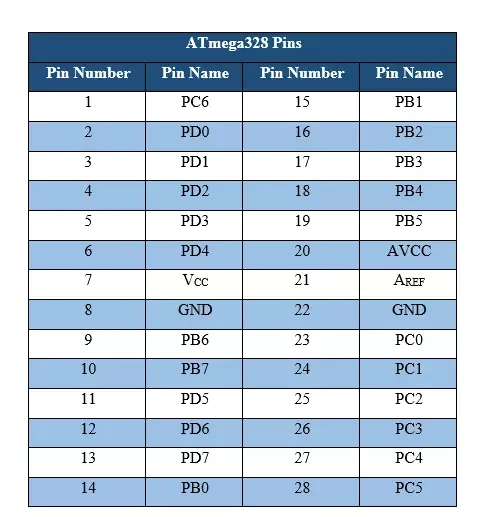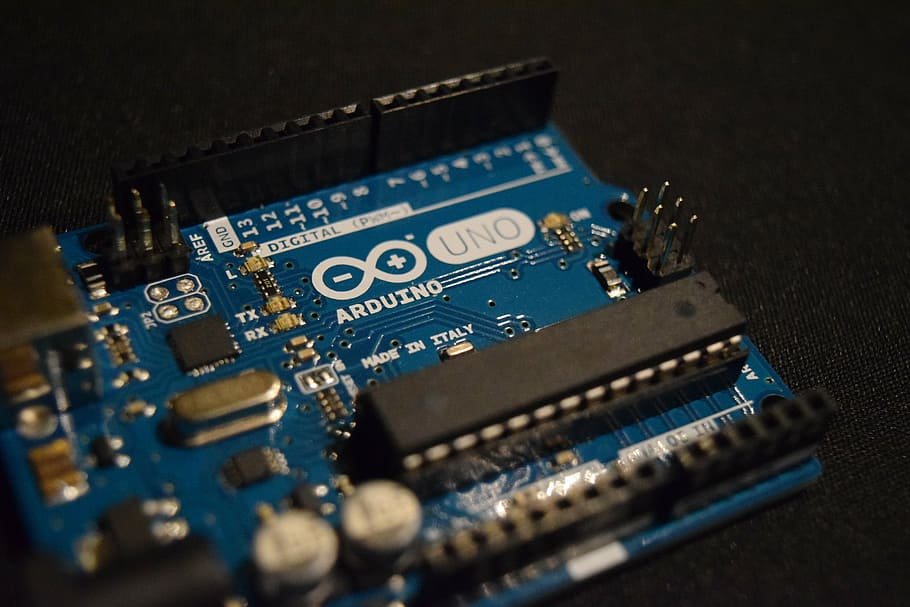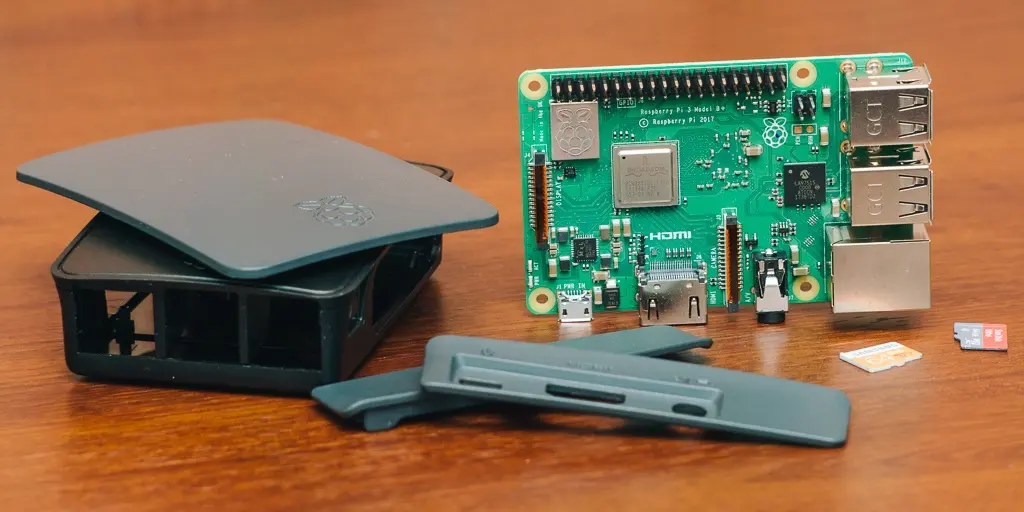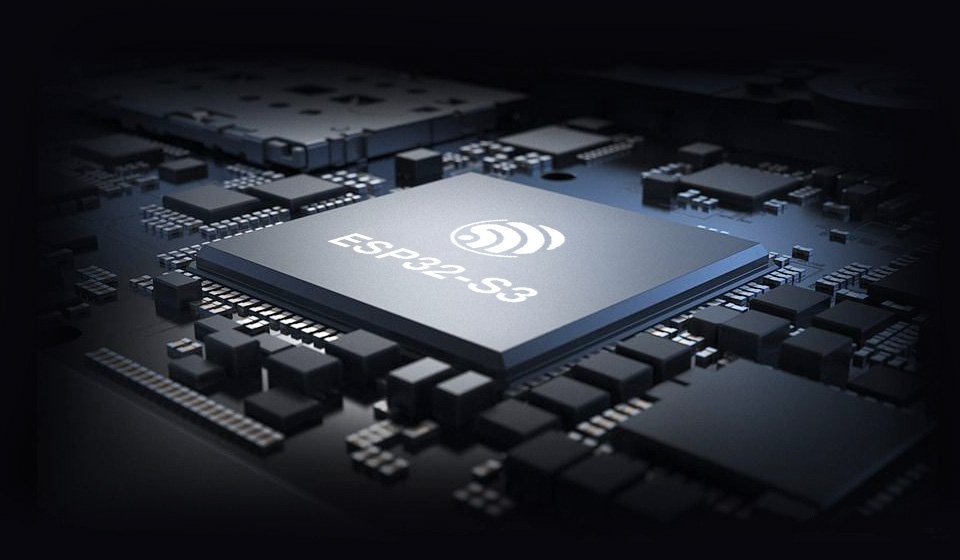The high-performance Microchip picoPower® 8-bit AVR® RISC-based microcontroller combines 32 KB ISP Flash memory with read-while-write capabilities, 1024B EEPROM, 2 KB SRAM, 23 general purpose I/O lines, 32 general purpose working registers, three flexible timer/counters with compare modes, internal and external interrupts, serial programmable USART, a byte-oriented Two-Wire serial interface, SPI serial port, a 6-channel 10-bit A/D converter (8-channels in TQFP and QFN/MLF packages), programmable watchdog timer with internal oscillator, and five software selectable power saving modes. The device operates between 1.8-5.5 volts.
By executing powerful instructions in a single clock cycle, the device achieves throughputs approaching one MIPS per MHz, balancing power consumption and processing speed.
What is an ATMega328P?
The ATMega328P is a single-chip microcontroller commonly used in Arduino products. It has a high performance and consumes low power, thus executing approximately 131 instructions.
In brief, the high performance is due to its advanced Reduced Instruction Set Computer architecture (RISC). Thus, the microcontroller is effective in systems or devices that require low power and cost microcontrollers.
- ATmega328 is an 8-bit, 28-Pin AVR Microcontroller, manufactured by Microchip, follows RISC Architecture and has a flash-type program memory of 32KB.
- Atmega328 is the microcontroller, used in basic Arduino boards i.e Arduino UNO, Arduino Pro Mini and Arduino Nano.
- It has an EEPROM memory of 1KB and its SRAM memory is 2KB.
- It has 8 Pins for ADC operations, which all combine to form PortA ( PA0 – PA7 ).
- It also has 3 built-in Timers, two of them are 8 Bit timers while the third one is 16-Bit Timer.
- You must have heard of Arduino UNO, UNO is based on atmega328 Microcontroller. It’s UNO’s heart. 🙂
- It operates ranging from 3.3V to 5.5V but normally we use 5V as a standard.
- Its excellent features include cost-efficiency, low power dissipation, programming lock for security purposes, real timer counter with separate oscillator.
- It’s normally used in Embedded Systems applications. You should have a look at these Real Life Examples of Embedded Systems, we can design all of them using this Microcontroller.
- The following table shows the complete features of ATmega328:
|
ATmega328 Features |
|
|
No. of Pins |
28 |
|
CPU |
RISC 8-Bit AVR |
|
Operating Voltage |
1.8 to 5.5 V |
|
Program Memory |
32KB |
|
Program Memory Type |
Flash |
|
SRAM |
2048 Bytes |
|
EEPROM |
1024 Bytes |
|
ADC |
10-Bit |
|
Number of ADC Channels |
8 |
|
PWM Pins |
6 |
|
Comparator |
1 |
|
Packages (4) |
8-pin PDIP 32-lead TQFP 28-pad QFN/MLF 32-pad QFN/MLF |
|
Oscillator |
up to 20 MHz |
|
Timer (3) |
8-Bit x 2 & 16-Bit x 1 |
|
Enhanced Power-on Reset |
Yes |
|
Power Up Timer |
Yes |
|
I/O Pins |
23 |
|
Manufacturer |
Microchip |
|
SPI |
Yes |
|
I2C |
Yes |
|
Watchdog Timer |
Yes |
|
Brownout detect (BOD) |
Yes |
|
Reset |
Yes |
|
USI (Universal Serial Interface) |
Yes |
|
Minimum Operating Temperature |
-40 C to +85 C |
ATmega328 Pins
- ATmega-328 is an AVR Microcontroller having twenty-eight (28) pins in total.
- All of the pins in chronological order, are listed in the table shown in the figure given below.

Now let’s have a look at the pinout of Atmega328 in detail:
ATMega328P Pin Configuration
- ATMega328P has 28 pins, where each pin serves various secondary functions. Below is a description of what each pin does.

ATmega328 Features
- It has 6 Analog input pins, and its memory can go up to 32kb. Also, it has 2kb of SRAM and up to 1kb of EEPROM.
- Its clock speed stands at 16 MegaHertz, and it has a total of 14 I/O pins.
- It operates at a minimum temperature of 40 degrees centigrade and a maximum temperature of 105 degrees centigrade.
- It has two eight-bit and sixteen-bit timers.
- It’s an advanced RISC with 6 Pulse Width Modulation PWM) channels.
- It operates at a minimum voltage of 1.8 D.C and a maximum of 5.5.
ATMega328P Applications
- This microcontroller is used in Arduino Micro, Nano, and Uno boards.
- It is used in peripheral interface systems and display units.
- It’s a major component for making power regulators.
- Engineers use it to construct embedded systems such as vending and coffee machines.






Very interesting points you have observed, thanks for putting
up.Raise your business